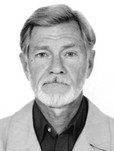Training system customizing in martial arts to body constitutions and qualities
Фотографии:
ˑ:
Professor, PhD I.V. Demin1
Associate Professor, PhD M.Y. Stepanov1
Associate Professor, PhD M.B. Salamatov2
1Tchaikovsky State Institute of Physical Culture, Perm Territory, Tchaikovsky
2Russian State University for the Humanities, Moscow
The present study analyzes the modern training system design and management processes in martial arts versus the individual body constitutions and qualities including the functional, anthropometric, hormonal, metabolic, mental and physical aspects. The study data demonstrates that the individual anthropometric characteristics, qualities and other aspects related test data versus the competitive success rates and movement biomechanics analyses give the effective means to design and manage the individual progress paths so as to attain the most ambitious competitive and sport excellence goals. The individualized training system designed and managed on the above systemic principles was tested beneficial in practical adolescent/ junior Thai boxing trainings as verified by the competitive progress of the group.
Keywords: training system, complex systems, anthropometric characteristics, athletic functionality.
References
- Abramova T.F., Machay I.A., Martirosov E.G. et al Ispolzovanie skorostnyih harakteristik protsessov adaptatsii v tekuschem upravlenii trenirovkoy sportsmenov [Use of speed characteristics of adaptation processes in current management of sport training]. Teoriya i praktika fiz. kultury, 1991, no. 6, pp. 31-38.
- Antomonov Y.T. Modelirovanie biologicheskih sistem. Spravochnik [Biological systems modeling. Reference]. Kiev: Naukova dumka publ., 1977, 260 p.
- Berg R.L. Primenenie matematicheskih metodov v biologii [Use of mathematical methods in biology]. St. Petersburg. 111: LSU publ., 1964.
- Druzhinin V.V., Kontorov D.S. Sistemotekhnika [System Engineering]. Moscow: Sov. radio publ., 1985, 230 p.
- Kazin E.M., et al Avtomatizirovannaya otsenka adaptivnyih vozmozhnostey u lits s razlichnyim morfotipom [Automated assessment of adaptive capabilities in individuals with different morphotypes]. Fiziol. cheloveka [Human Physiology], 1992, vol. 18, no. 1. P. 97.
- Moroz A.I. Kurs teorii sistem [Systems theory course]. Study guide for inst. majoring in applied mathematics. Moscow: Vysshaya shkola publ., 1987, 304 p.
- Nikityuk B.A., Kozlov A.I. Novaya tekhnika somatotipirovaniya [New somatotyping technique]. Novosti sport. i med. antropologii [News of sport and med. anthropology]. Moscow, 1990, no. 3.
- Khrisanfova E.N. Konstitutsiya i biokhimicheskaya individualnost cheloveka [Constitution and biochemical individuality of man]. Moscow: MSU publ., 1990, 160 p.
- Shalaurov A.V. Skhema somatotipirovaniya po otnositelnomu soderzhaniyu osnovnyih komponentov massyi tela [Scheme of somatotyping by relative content of main components of body weight]. Novosti sport. i med. antropologii [Sport and med. anthropology news], Moscow, 1990. no. 4.
- Pipes T.V. Strength training and fiber tipes. Scholastig Coach, 1994. V.63, no. 8, pp. 67- 71.



